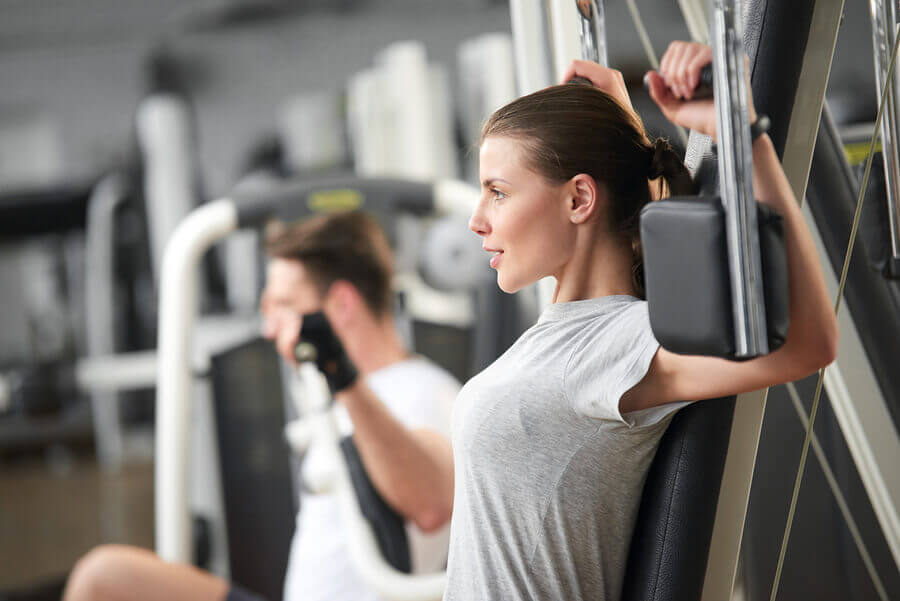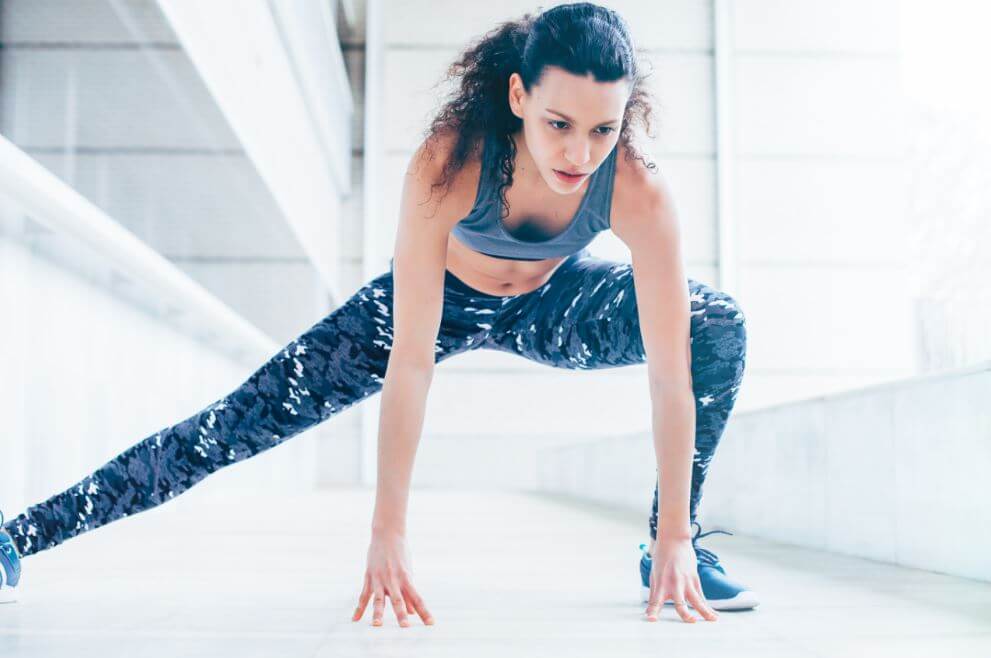Is it Easy to Get in Shape?

When talking about getting in shape, there is a word that sums up the whole process: patience. Surely, we’d all like to get in perfect shape as quickly and as easily as possible, however, the process isn’t that simple.
In order to get fit, you’ll need a lot of perseverance and dedication. Now that summer is on the way, many people begin their workouts just a month before summer with the so-called “bikini guides”. They resort to drastic measures that claim to offer quick results. The truth is that some of these drastic measures bring along terrible long-term consequences.
In order to avoid these consequences, read along. In this article, we’ll share what you should have in mind about getting in shape and why so many of us find it so difficult.
The beginning is always hard
Any process that takes us away from our comfort zones will be hard in the beginning. In order to achieve your objective of getting in shape, it’s important to slowly introduce physical activities into your daily routine.
In order to adhere to your routine, you must keep motivated to reach the goal of getting in shape. It’s also important to keep in mind that results don’t become visible in the short term. In order to achieve great results, you must be constant and unrelenting.
Keeping this mindset is the only way to get in shape and more importantly stay in shape.
Get in shape: why does the process take so long?
The concept of ‘getting fit’ is something that is often talked about. It’s a very broad concept and it depends on the person who defines it. It’s a very general term and has never been demonstrated that some people take longer to get into shape than others. At the end of the day, it depends on a person’s characteristics and objectives.

It’s also important to clear up that being thin doesn’t mean that an individual is fit. People who are overweight are almost always identified as being unfit. However, this isn’t always the case. Try to keep the following guidelines in mind:
- If you’re overweight or obese, the first step is the elimination of body fat. In this case, it’s important to adhere to a routine that consists of intense, well-adapted workouts and a hypocaloric diet. Don’t forget to include a cardiovascular exercise.
- On the other hand, if you’re thin and want to become toned, your training plan should consist of strength and hypertrophy routines to help you gain muscle mass. You should also maintain a caloric surplus.
Factors to consider when getting in shape
Age
Age is an important factor that we must keep in mind. As a general rule, from the age of 30, fat mass tends to develop faster than muscle mass.
Likewise, energy expenditure also decreases with age. After the age of 30 energy expenditure may reduce by up to 2 percent every 10 years. That’s why it’s important to adapt your caloric intake as the years go on. Although 2 percent is relatively small, it can result in an increase of 2.5 kilograms a year if adjustments are not made.
As life goes on, it becomes a bit more difficult to warm up, train and above all, to recover after physical exercise. Training capacity also decreases over time, you’ll have to pay attention to these details in order to stay in shape.
Get in shape: women have to work a little harder
Another important factor to consider is gender. In general, women weigh 10 kg less than men and have an average of 3 to 6 kg more fat than men. Men have a higher percentage of muscle mass, they also have a wider torso and longer extremities.
Due to these aspects, women have a mechanical disadvantage compared to men. This prevents them from lifting more weights and therefore, developing more strength.

Women also have fewer red blood cells than men. Red blood cells are responsible for transporting oxygen to the body’s muscles and organs. In addition, in general, women have smaller rib cages, and this affects respiratory capacity.
In terms of advantages, women can be as much as ten times more flexible than men, The same goes for articular mobility.
It’s also important to point out that when it comes to the lower body, the difference is strength is almost in-existent. Women tend to have more muscle mass in these areas.
Despite all the aspects we mentioned above, women are able to gain strength at the same rhythm as men. The most important thing to do regardless of gender is to create a unique plan to reach your specific objectives.
Get in shape: selecting exercises to reach your objective
In order for the process to be efficient and effective, you must keep in mind that your body responds differently depending on the exercise you perform. However, you’ll be able to burn fat regardless of the type of exercise you perform as long as you burn the same amount of calories.
The big difference between different types of exercise is the objectives. Low-intensity physical activity doesn’t develop a lot of muscle mass. However, it does allow for fat burning and weight loss.
On the other hand, high-intensity training (HIT) can build muscle mass while reducing fat at the same time. However, weight loss with this type of exercise is minimal due to the increase of muscle mass.
When you decide on a routine, you should do so in accordance with your goals. In addition, you should never forget the important balance between physical exercise and diet.

Conclusion
Now you know more about the process of getting in shape and the factors that influence the process. In order to achieve your goals try to keep the following guidelines in mind:
- Take advantage of free time to exercise.
- Train with a partner.
- Look for motivating exercises that meet your objectives.
- Include workouts in your calendar.
- Be positive and constant.
Last but not least, it may be helpful to seek out the help of a professional that will help guide you to your goals. What are you waiting for to start getting in shape?
When talking about getting in shape, there is a word that sums up the whole process: patience. Surely, we’d all like to get in perfect shape as quickly and as easily as possible, however, the process isn’t that simple.
In order to get fit, you’ll need a lot of perseverance and dedication. Now that summer is on the way, many people begin their workouts just a month before summer with the so-called “bikini guides”. They resort to drastic measures that claim to offer quick results. The truth is that some of these drastic measures bring along terrible long-term consequences.
In order to avoid these consequences, read along. In this article, we’ll share what you should have in mind about getting in shape and why so many of us find it so difficult.
The beginning is always hard
Any process that takes us away from our comfort zones will be hard in the beginning. In order to achieve your objective of getting in shape, it’s important to slowly introduce physical activities into your daily routine.
In order to adhere to your routine, you must keep motivated to reach the goal of getting in shape. It’s also important to keep in mind that results don’t become visible in the short term. In order to achieve great results, you must be constant and unrelenting.
Keeping this mindset is the only way to get in shape and more importantly stay in shape.
Get in shape: why does the process take so long?
The concept of ‘getting fit’ is something that is often talked about. It’s a very broad concept and it depends on the person who defines it. It’s a very general term and has never been demonstrated that some people take longer to get into shape than others. At the end of the day, it depends on a person’s characteristics and objectives.

It’s also important to clear up that being thin doesn’t mean that an individual is fit. People who are overweight are almost always identified as being unfit. However, this isn’t always the case. Try to keep the following guidelines in mind:
- If you’re overweight or obese, the first step is the elimination of body fat. In this case, it’s important to adhere to a routine that consists of intense, well-adapted workouts and a hypocaloric diet. Don’t forget to include a cardiovascular exercise.
- On the other hand, if you’re thin and want to become toned, your training plan should consist of strength and hypertrophy routines to help you gain muscle mass. You should also maintain a caloric surplus.
Factors to consider when getting in shape
Age
Age is an important factor that we must keep in mind. As a general rule, from the age of 30, fat mass tends to develop faster than muscle mass.
Likewise, energy expenditure also decreases with age. After the age of 30 energy expenditure may reduce by up to 2 percent every 10 years. That’s why it’s important to adapt your caloric intake as the years go on. Although 2 percent is relatively small, it can result in an increase of 2.5 kilograms a year if adjustments are not made.
As life goes on, it becomes a bit more difficult to warm up, train and above all, to recover after physical exercise. Training capacity also decreases over time, you’ll have to pay attention to these details in order to stay in shape.
Get in shape: women have to work a little harder
Another important factor to consider is gender. In general, women weigh 10 kg less than men and have an average of 3 to 6 kg more fat than men. Men have a higher percentage of muscle mass, they also have a wider torso and longer extremities.
Due to these aspects, women have a mechanical disadvantage compared to men. This prevents them from lifting more weights and therefore, developing more strength.

Women also have fewer red blood cells than men. Red blood cells are responsible for transporting oxygen to the body’s muscles and organs. In addition, in general, women have smaller rib cages, and this affects respiratory capacity.
In terms of advantages, women can be as much as ten times more flexible than men, The same goes for articular mobility.
It’s also important to point out that when it comes to the lower body, the difference is strength is almost in-existent. Women tend to have more muscle mass in these areas.
Despite all the aspects we mentioned above, women are able to gain strength at the same rhythm as men. The most important thing to do regardless of gender is to create a unique plan to reach your specific objectives.
Get in shape: selecting exercises to reach your objective
In order for the process to be efficient and effective, you must keep in mind that your body responds differently depending on the exercise you perform. However, you’ll be able to burn fat regardless of the type of exercise you perform as long as you burn the same amount of calories.
The big difference between different types of exercise is the objectives. Low-intensity physical activity doesn’t develop a lot of muscle mass. However, it does allow for fat burning and weight loss.
On the other hand, high-intensity training (HIT) can build muscle mass while reducing fat at the same time. However, weight loss with this type of exercise is minimal due to the increase of muscle mass.
When you decide on a routine, you should do so in accordance with your goals. In addition, you should never forget the important balance between physical exercise and diet.

Conclusion
Now you know more about the process of getting in shape and the factors that influence the process. In order to achieve your goals try to keep the following guidelines in mind:
- Take advantage of free time to exercise.
- Train with a partner.
- Look for motivating exercises that meet your objectives.
- Include workouts in your calendar.
- Be positive and constant.
Last but not least, it may be helpful to seek out the help of a professional that will help guide you to your goals. What are you waiting for to start getting in shape?
All cited sources were thoroughly reviewed by our team to ensure their quality, reliability, currency, and validity. The bibliography of this article was considered reliable and of academic or scientific accuracy.
- Alkahtani, S. A., King, N. A., Hills, A. P., & Byrne, N. M. (2013). Effect of interval training intensity on fat oxidation, blood lactate and the rate of perceived exertion in obese men. SpringerPlus, 2, 532.
- Heart, T. N. (1998). Executive summary of the clinical guidelines on the identification, evaluation, and treatment of overweight and obesity in adults. Journal of the American Dietetic Association, 98(10), 1178-1191.
This text is provided for informational purposes only and does not replace consultation with a professional. If in doubt, consult your specialist.








